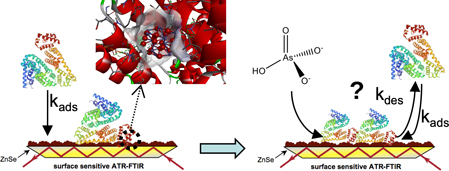Environmental context. Endocrine disrupting compounds (EDCs) are among the most recently targeted micropollutants detected in wastewater treatment plant (WWTP) effluents and in aquatic environments. There is a need for the development of robust analytical methods for most relevant estrogenic EDCs. This study provides optimisation of analytical techniques and addresses several relevant aspects that are often overlooked in the literature. The method was finally successfully employed for the analysis of WWTP effluents.

Environmental Chemistry
Volume 18 Number 4 2021
EN21031Complexes of humic acid with cationic surfactants support the supramolecular view of extracted humic matter
 , Eliane El Hayek, Veronique Kazpard, Celia Plisson-Chastang, Patricia Vicendo and Celine Caillet
, Eliane El Hayek, Veronique Kazpard, Celia Plisson-Chastang, Patricia Vicendo and Celine Caillet 
Environmental context. The molecular organisation of humic substances is key to understanding various natural and engineered processes, such as metal speciation and bioavailability. Two main models have been proposed: polymeric organisation and supramolecular organisation. A physicochemical approach, based on the interaction of humic acid with increasing amounts of cationic surfactants, leads to a sequence of molecular structures that provides support to the supramolecular view of humic organisation.
Environmental context. Aerosol acidity, or aerosol aqueous phase pH, can affect various environmental processes. Based on high frequency measurements of particulate compositions, along with thermodynamic calculations, this work studies particle acidity in the course of severe episodes of haze in Shanghai and considers the effect of this on the production of nitrate. The results will provide new perspectives on our interpretation of PM2.5 acidity during haze episodes in megacities.

Environmental context. Hematite nanoparticles are efficient adsorbents for proteins and pollutants in environmental and biological systems. Hematite and the protein bovine serum albumin (BSA) were used as models to investigate the surface chemistry and competitive role of BSA in arsenate adsorption. Results show that surface BSA inhibits arsenate adsorption, potentially altering its mobility and bioavailability.



